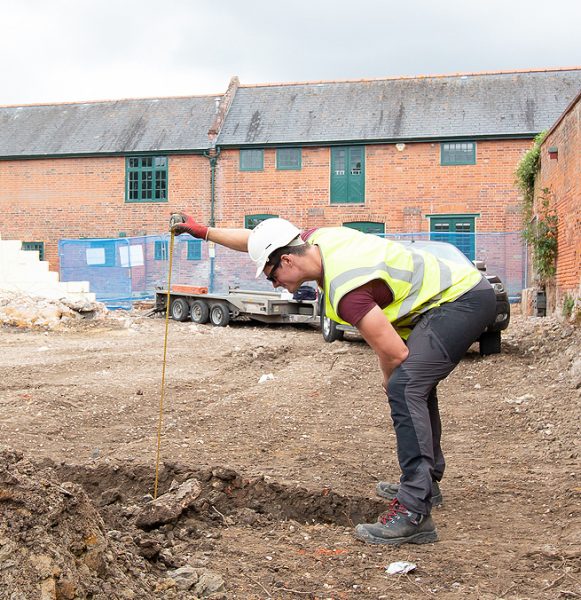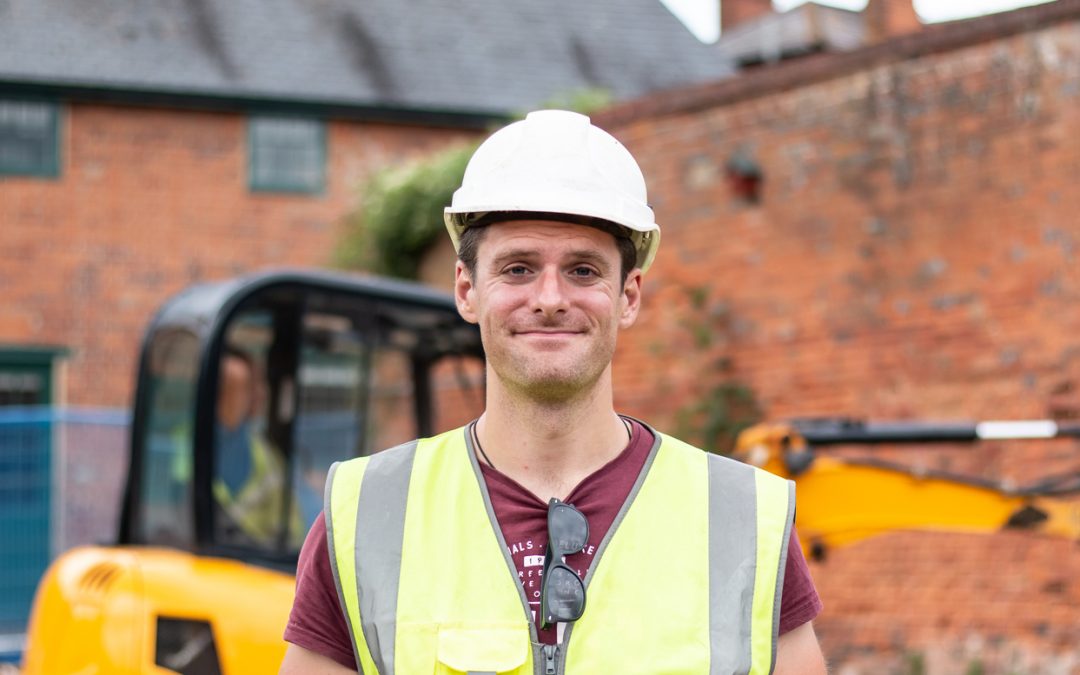Top tips for pain free trial pits
Geotechnical • Industry matters
Hi everyone! James Gould here. I joined Ground & Water for a career change, after working in the health and fitness industry. I’m afraid, I am drawn to lifting heavy things up and down. I have absolutely no idea why, but it makes me happy. So when I got into the ground investigation and engineering industry, it was only natural that I was also drawn to hand digging trial pits.
Now clearly I’m not medically trained, but I do have BA(Hons) in fitness and personal training and I am a qualified personal trainer, so my previous experience tells me the task of digging a trial pit, is certainly something that has the potential for exposing yourself to injury. The repetitive motion of downward strikes needed to dig a hole, is not an action that is kind on the body, however you do it. Nevertheless, if you are moving in a dysfunctional way, the wear and tear on joints and tendons increases dramatically. Moving efficiently is essential for corporeal longevity when it comes to digging.
Unfortunately, I have met a few drillers in my time, who hobble around site after years of this arduous work. Part of me wonders, whether they would be where they are physically, had they learnt correct movement patterns and recovery methods when they were younger?
I am keen to try and use my health and fitness knowledge, to help both myself, and others in the geotechnical field, to minimise the risk of physical injury at work, by sharing a few techniques. Although I could write a long list of things I would recommend, I will only mention a couple of points, which can be implemented straight away and have the biggest potential to make a difference.
As our work is based on the ground below us, in our job there isn’t really a way around the heavy involvement of the lower back (lumbar spine to give it its anatomical name). Whether it be lifting a post hole digger and driving it into the ground, or picking up a heavy bulk bag filled with soil samples; an important movement that must be mastered is the hip hinge.
In a nutshell, the hip hinge means rather than bending over at the spine and rounding your back, you bend from the hip joint by setting the hips back posteriorly as far and as naturally as possible. You can do a Google search for ‘hip hinge’. If you want to have a visual look at what I’m talking about, I’m hip hinging in the image below.
 We often hear about ‘lift with your legs’ to take your back out of the movement. That works great for lighter loads and smaller objects, but when you start lifting heavier loads you find that you start to topple forward unless you bend forward at the hips.
We often hear about ‘lift with your legs’ to take your back out of the movement. That works great for lighter loads and smaller objects, but when you start lifting heavier loads you find that you start to topple forward unless you bend forward at the hips.
I have seen a lot of rounded backs while on site and although, when not lifting anything, this isn’t too much of a problem, when you start to add a load to this position; it becomes more of a danger for pulling a muscle and putting stress onto spinal discs. Keeping the spine in the same, neutral position that it forms when you stand upright is what you are looking to maintain when bending over. Like any new skill, you’ll have to be mindful of bending in this way when first starting out, but before you know it you’ll be hip hinging your way to safer manual handling without even thinking about it.
Even when moving correctly, the lower back and shoulders are still getting some rough treatment when you’re digging frequently. This type of repetitive physical work can lead to spinal compression and overuse injuries in the shoulders; all resulting in pain and loss of range in motion. Therefore I would recommend something called joint decompression. This is a recuperative technique that helps to open the joints and restore space that has been lost between the bones, joints and the discs in the back. Not only does this relieve pain and tension, it helps in injury prevention. The easiest way to do this is to perform a dead hang. This is where you simply grab an overhead bar with a shoulder width grip and hang like a dead weight. You should allow the shoulders to rise and let all of your muscles relax (apart from those involved in gripping the bar!). There have been numerous cases of people recovering from shoulder injuries, aches and pains, specifically through the rotator cuff, by simply performing the dead hang. I would aim for two minutes total hang time every other day. If grip is a limiting factor, then splitting the hanging time into multiple mini hangs of a few seconds will be fine. You could also invest in some lifting straps, which can be purchased, that wrap around the bar and aid in grip strength. I use a pull up bar that attaches to a door frame to do my hangs and that works nicely.
So there you have it! A couple of little tips that could make a big difference in the long term. I hope to see you hinging and hanging and enjoying a pain free career digging trial pits!
